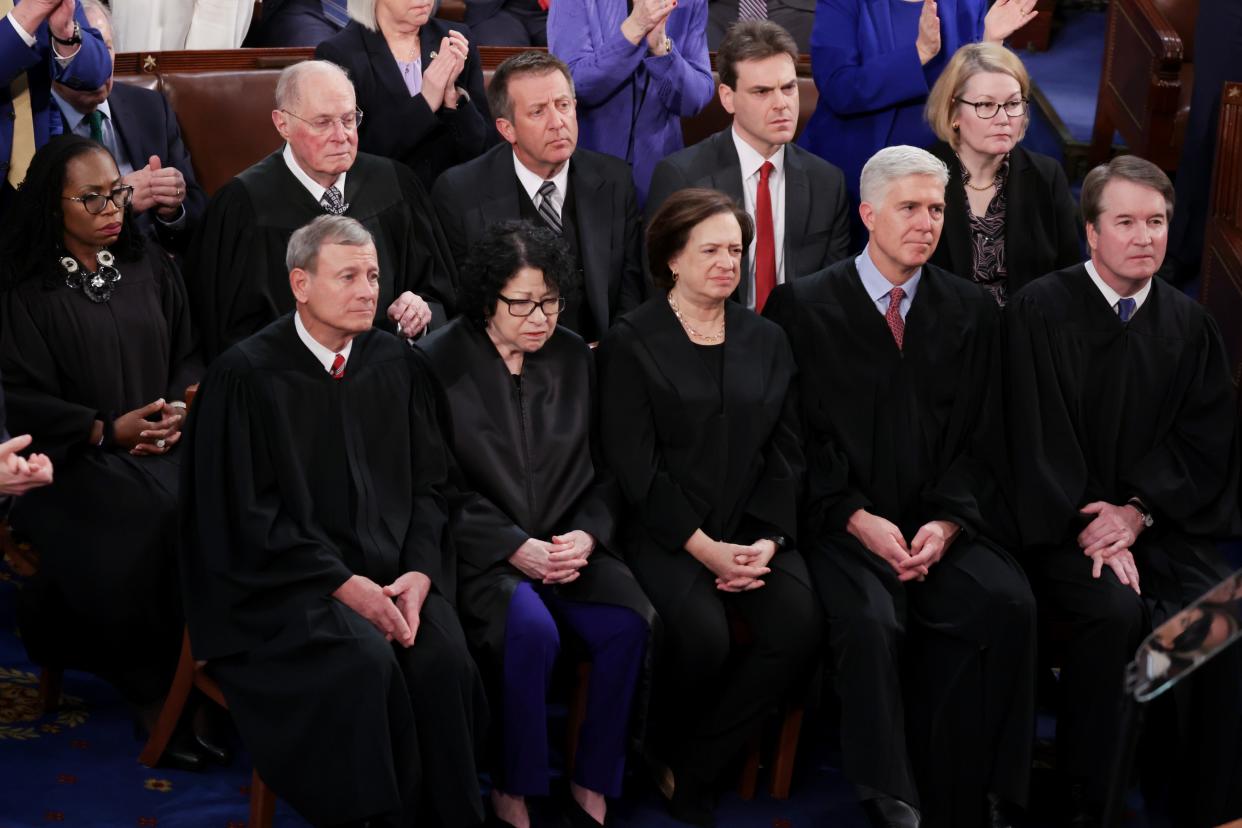Pro-originalist justices dominate the U.S. Supreme Court today. Here's how that happened
The Supreme Court, as Justice Oliver Wendell Holmes Jr. said, is a “storm center.”
Conflicts over institutional power, individual rights and, most significantly, the meaning of the Constitution all find their way to the justices’ chambers.
Because the Court has come to exercise final interpretive authority over the Constitution, a power increasingly viewed with skepticism across the ideological spectrum, how justices interpret the text takes on extraordinary importance.
It’s not surprising then that the Supreme Court continues to be a source of electoral conflict and that battles over nominations resemble pitched political warfare.
‘Living constitutionalism’ made an impact on court decisions
Under the tenure of Chief Justice Earl Warren in the 1950s and '60s, a version of “living constitutionalism” was ascendant.
Justices, in that view, must interpret the text according to changing social conditions. For example, when interpreting the Eighth Amendment’s prohibition on “cruel and unusual punishments,” justices, according to Warren, should be informed by “evolving standards of decency that mark the progress of a maturing society.”
This “evolving” approach led the court to offer a range of new readings of the Constitution particularly of the Bill of Rights and 14th Amendment. Most famous, or infamous, was the Warren Court’s decision in Griswold v. Connecticut identifying a right to privacy not in any specific amendment but instead saying that it was implied in the First, Third, Fourth and Fifth amendments.
The “guarantees in the Bill of Rights have penumbras,” the majority ruled, “formed by emanations.”
Keep the lights on. The party’s not over in presidential elections
This rather flexible approach led to a political backlash. “Impeach Earl Warren” billboards were a common site on America’s roads during the 1960s.
Originalism evolved after the Warren Court
It also gave rise to another school of constitutional interpretation known as originalism.
While many variations of originalism exist today, at its core, originalism looks to ground interpretation of the Constitution in the meaning of its words when it and its amendments were adopted.
Doing so, originalists maintained would prevent justices, who are not elected and have life tenure, from reading their own preferences into the text or amending the Constitution under the guise of interpretation.
Only by restraining judicial interpretation could judicial power be reconciled with constitutional self-government.
While initially ridiculed as simplistic, particularly during the failed nomination of Robert Bork in 1987, and the province of only self-styled conservatives, originalism became a growth industry in the legal academy and the judiciary.
While still a minority position among constitutional scholars, it has attracted high-profile progressive adherents such as Yale Law School’s Akhil Amar. And during her 2010 nomination hearing, Justice Elena Kagan said that in some ways “we are all originalists” now. Such a confession would have been unimaginable from a Democratic nominee 15 years earlier.
SCOTUS today rules in an originalist storm center
However, the importance of originalism today comes from its prominence among the current six justices, Chief Justice John Roberts along with Justices Clarence Thomas, Samuel Alito, Neil Gorsuch, Brett Kavanaugh, and Amy Coney Barrett, associated with the conservative wing of the Court. While their commitment to originalism varies, it shapes how all of them interpret the document.

This turn to originalism has not reduced the conflict surrounding the Court.
For example, the Court’s decision in Dobbs v. Jackson overturning Roe v. Wade was an originalist one but anyone who watched the Democratic National Convention or has the faintest political pulse knows that the ruling is not without its critics. Whether you agree with such decisions or not, to understand the contemporary Court and the role that it will continue play in our system you have to understand originalism.
The Supreme Court shows no signs of ceasing to be a storm center. But this time it happens to be an originalist one.
For those interested in understanding of originalism, the Institute of American Civics will be hosting Professor Keith Whittington of Yale Law School on Constitution Day, Sept. 17, at the University of Tennessee, Knoxville.

One of the nation’s leading constitutional scholars, Professor Whittington will lecture on “Originalism, the Roberts Court, and the Future of Constitutional Interpretation.” For information and to register please visit, https://calendar.utk.edu/event/originalism-the-roberts-court-and-the-future-of-constitutional-interpretation
Joshua Dunn is executive director of the Institute of American Civics at the Baker School of Public Policy and Public Affairs at University of Tennessee Knoxville.
This article originally appeared on Nashville Tennessean: Supreme Court justices evolved into an originalist 'storm center'






